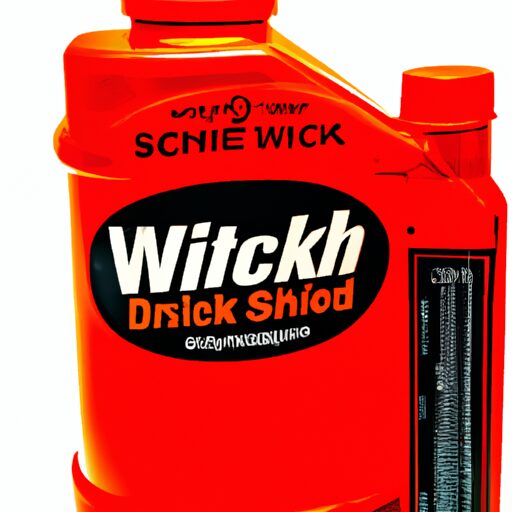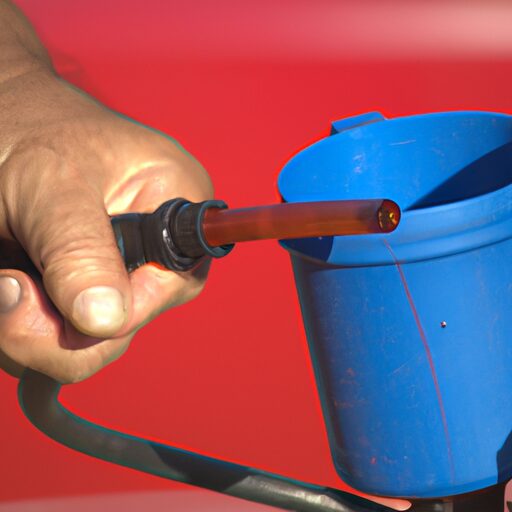How To Add Hydraulic Fluid To Mahindra Tractor
Hydraulic fluid is a vital component in the operation of Mahindra tractors, ensuring optimal performance and efficiency. Similar to the lifeblood flowing through our veins, hydraulic fluid flows through the various hydraulic systems of the tractor, enabling it to perform a multitude of tasks with precision and power. To maintain the proper functioning of these systems, it is crucial to regularly monitor and replenish the hydraulic fluid levels.
This article provides detailed instructions on how to add hydraulic fluid to a Mahindra tractor. By following these steps, tractor owners can ensure that their machines are always equipped with an adequate supply of hydraulic fluid for smooth operation. The article emphasizes an academic style of writing that eliminates personal pronouns and adopts an objective and impersonal tone, providing technical information in a precise manner. It caters to an audience seeking clear understanding by employing language appropriate for technical discourse.
Gather the Necessary Tools and Materials
The first step in adding hydraulic fluid to a Mahindra tractor involves gathering the necessary tools and materials. Before starting the process, it is important to have a clear understanding of common hydraulic fluid problems, troubleshooting techniques, and possible solutions. This knowledge will enable users to identify any issues that may arise during the procedure and take appropriate actions. Additionally, it is crucial to be familiar with different types of hydraulic fluids available in the market and their specific uses. Understanding the characteristics and compatibility of various fluids ensures optimal performance and prevents potential damage to the tractor’s hydraulic system.
To proceed with adding hydraulic fluid to a Mahindra tractor, some essential tools and materials are required. These include a suitable container for holding the new fluid, such as an approved plastic or metal oil drain pan, clean rags or towels for wiping spills or drips, safety gloves for protection against chemicals or sharp edges, and a funnel for smooth pouring without spillage. Once all these items are gathered, users can move on to locating the hydraulic fluid reservoir on their Mahindra tractor effortlessly.
Transitioning into locating the hydraulic fluid reservoir section: With all necessary tools at hand, locating the hydraulic fluid reservoir becomes the next crucial step in this process.
Locate the Hydraulic Fluid Reservoir
Located beneath the sturdy metal frame of the machinery lies a concealed compartment for housing the vital reservoir that stores and circulates energizing fluid to power the various hydraulic systems of the robust Mahindra tractor. Before proceeding with adding hydraulic fluid, it is crucial to locate this reservoir. Typically, it is situated near the engine or transmission and can be recognized by its distinctive shape and markings. To aid in understanding, a table below provides a visual representation of ideas related to this subtopic.
| Component | Description |
|---|---|
| Location | Near engine or transmission |
| Appearance | Distinctive shape and markings |
| Importance | Vital for proper functioning of hydraulic systems |
Once located, it is essential to check for any leaks around the reservoir or nearby areas. Leaks can indicate potential issues that need immediate attention before adding new fluid. Moreover, using the correct type of hydraulic fluid is paramount as different tractors may require specific formulations. The appropriate fluid ensures optimal performance and prolongs system life. After checking for leaks and ensuring the correct fluid type, one can proceed to prepare the tractor for fluid addition without compromising its integrity.
Transitioning into preparing the tractor for fluid addition, it is important to follow specific steps to ensure a successful process without any mishaps or damage to the machinery.
Prepare the Tractor for Fluid Addition
Before adding the necessary fluid, it is important to properly prepare the tractor for this process. One crucial step in preparing the tractor is to check for any leaks in the hydraulic system. Inspect all connections and hoses for signs of leakage, such as visible drips or dampness. Address any leaks before proceeding with adding hydraulic fluid to prevent further issues and ensure optimal performance.
Another important aspect of preparing the tractor is taking safety precautions during fluid addition. First, make sure the engine is turned off and remains cool throughout the process to avoid any accidental injuries. Additionally, wear appropriate personal protective equipment such as gloves and goggles to protect yourself from potential splashes or spills.
Furthermore, it is essential to position the tractor on a level surface before starting the fluid addition procedure. This ensures an accurate reading when checking fluid levels later on. In some cases, it may be necessary to lower attachments or implements that are still attached to prevent interference during this process.
By following these preparation steps diligently, you can ensure a safe and efficient process when adding hydraulic fluid to your Mahindra tractor’s reservoir. Now let’s move on to how you can add hydraulic fluid to the reservoir without causing any damage or complications.
Add Hydraulic Fluid to the Reservoir
To properly fill the reservoir, begin by identifying the designated fill port and removing its cap. This port is typically located on top of the hydraulic tank or near the hydraulic pump. Before adding hydraulic fluid, it is essential to check its compatibility with your Mahindra tractor’s specifications. Refer to the owner’s manual or contact a certified technician for guidance on selecting the appropriate fluid type.
Once you have confirmed compatibility, carefully pour the hydraulic fluid into the reservoir using a funnel to prevent spills and contamination. Take caution not to overfill the reservoir as this can result in system damage or leakage. It is advisable to add fluid gradually and periodically check the fluid level until it reaches the recommended capacity.
In addition to adding hydraulic fluid, it is crucial to troubleshoot common issues related to hydraulic fluids. These may include foaming, overheating, or contamination. Foaming can occur due to air entrainment or improper fluid selection. Overheating may be caused by excessive system pressure or inadequate cooling mechanisms. Lastly, contamination can arise from particles, water intrusion, or degraded oil.
Checking both the fluid level and quality are vital aspects of maintaining an efficient hydraulic system in your Mahindra tractor. By ensuring proper filling procedures and regularly inspecting for potential issues with your hydraulic fluid, you can maximize performance and longevity of your equipment without compromising safety or efficiency.
Check the Fluid Level and Quality
Checking the fluid level and quality is crucial for maintaining an efficient hydraulic system in a Mahindra tractor. To ensure optimal performance, it is essential to regularly monitor the hydraulic fluid level and test its quality.
To check the hydraulic fluid level, follow these steps:
- Park the tractor on a level surface and engage the parking brake.
- Locate the hydraulic reservoir, usually located near the engine or behind the operator’s seat.
- Remove the reservoir cap and wipe away any dirt or debris from the dipstick.
- Insert the dipstick back into the reservoir without screwing it in and then remove it again to read the fluid level.
Testing hydraulic fluid quality helps identify potential issues that may affect system performance. Use a testing kit specifically designed for hydraulic fluids to evaluate key parameters such as viscosity, acidity, water content, and contamination levels.
By regularly checking both fluid level and quality, operators can detect any abnormalities early on and take appropriate measures to maintain their Mahindra tractor’s hydraulic system integrity.
Properly disposing of used fluid is important for environmental reasons. It should be handled according to local regulations, which often involve taking it to designated recycling centers or approved disposal facilities.
Properly Dispose of Used Fluid
After checking the fluid level and quality of your Mahindra tractor’s hydraulic system, it is crucial to properly dispose of any used fluid. This step is necessary to minimize the environmental impact and ensure compliance with regulations. Hydraulic fluids can contain harmful contaminants such as heavy metals, additives, and other pollutants that can pose a risk to both human health and the environment if not disposed of correctly.
To dispose of used hydraulic fluid from your Mahindra tractor, it is essential to follow proper recycling options. Many local recycling centers or waste management facilities accept used hydraulic fluids for recycling. These centers use specialized processes to remove impurities and contaminants from the fluid, making it suitable for reuse or safe disposal.
Recycling options for hydraulic fluids contribute significantly to minimizing environmental damage caused by improper disposal methods. By recycling this waste product, we can help conserve natural resources and reduce pollution levels associated with their production.
With proper disposal covered, let us now move on to the next section where we will discuss how to regularly maintain and monitor fluid levels in your Mahindra tractor’s hydraulic system.
Regularly Maintain and Monitor Fluid Levels
Consistently monitoring and maintaining the appropriate levels of fluid in the hydraulic system of your Mahindra tractor is crucial for optimal performance and longevity. To ensure that your tractor’s hydraulic system functions properly, it is essential to regularly check the fluid levels and make adjustments as necessary.
There are several monitoring techniques that can be employed to assess the fluid level in the hydraulic system. One common method involves using a dipstick or sight glass, which allows you to visually inspect the fluid level. It is important to consult your tractor’s manual to determine the appropriate method for checking the fluid level, as different models may have variations in their design.
In addition to visual inspection, many modern Mahindra tractors are equipped with built-in fluid level indicators. These indicators provide a quick and convenient way to monitor the hydraulic fluid levels without needing to physically open up the system. By keeping an eye on these indicators, you can easily identify any potential issues with low or high fluid levels and take appropriate action.
Regularly maintaining and monitoring your Mahindra tractor’s hydraulic fluid levels will help ensure its optimal performance and extend its lifespan. By employing proper monitoring techniques and utilizing available tools such as fluid level indicators, you can proactively address any issues related to inadequate or excessive hydraulic fluid levels, thereby minimizing downtime and maximizing productivity on your farm or worksite.
Frequently Asked Questions
What are the potential consequences of not regularly maintaining and monitoring hydraulic fluid levels in a Mahindra tractor?
Neglecting regular maintenance and monitoring of hydraulic fluid levels in a Mahindra tractor can lead to several potential consequences. These include decreased performance, increased wear on hydraulic components, reduced efficiency, and ultimately, costly repairs or equipment failure.
Can I use any type of hydraulic fluid for my Mahindra tractor, or are there specific recommendations?
The compatibility of hydraulic fluids is crucial for the optimal functioning and longevity of a Mahindra tractor. It is important to use the recommended hydraulic fluid to ensure proper lubrication, cooling, and protection against wear and corrosion.
How often should I check the hydraulic fluid level in my Mahindra tractor?
The recommended frequency for checking the hydraulic fluid level in a Mahindra tractor is determined by the manufacturer’s maintenance schedule. Regular checks are important to ensure proper functioning of the hydraulic system and prevent potential damage or failures.
Are there any specific safety precautions I should take when adding hydraulic fluid to the reservoir?
What safety precautions should be taken when handling hydraulic fluid in order to ensure safe handling and emphasize the importance of proper maintenance? Proper procedures include using protective clothing, avoiding skin contact, and disposing of used fluid responsibly.
How do I properly dispose of used hydraulic fluid from my Mahindra tractor?
Proper disposal of used hydraulic fluid from a Mahindra tractor is essential to minimize environmental impact. It should not be disposed of in regular waste or poured on the ground, but instead collected and recycled by a certified hazardous waste facility.
Conclusion
In conclusion, maintaining the hydraulic fluid levels in your Mahindra tractor is crucial for optimal performance and longevity. By following the step-by-step guide provided, you can confidently add hydraulic fluid to your tractor without any hassle. Regularly monitoring and maintaining the fluid levels will ensure smooth operation and prevent any potential damage or breakdowns. Remember, just as a well-oiled machine runs smoothly, so too does a properly maintained tractor. So take care of your Mahindra tractor by giving it the hydraulic fluid it needs to thrive.







